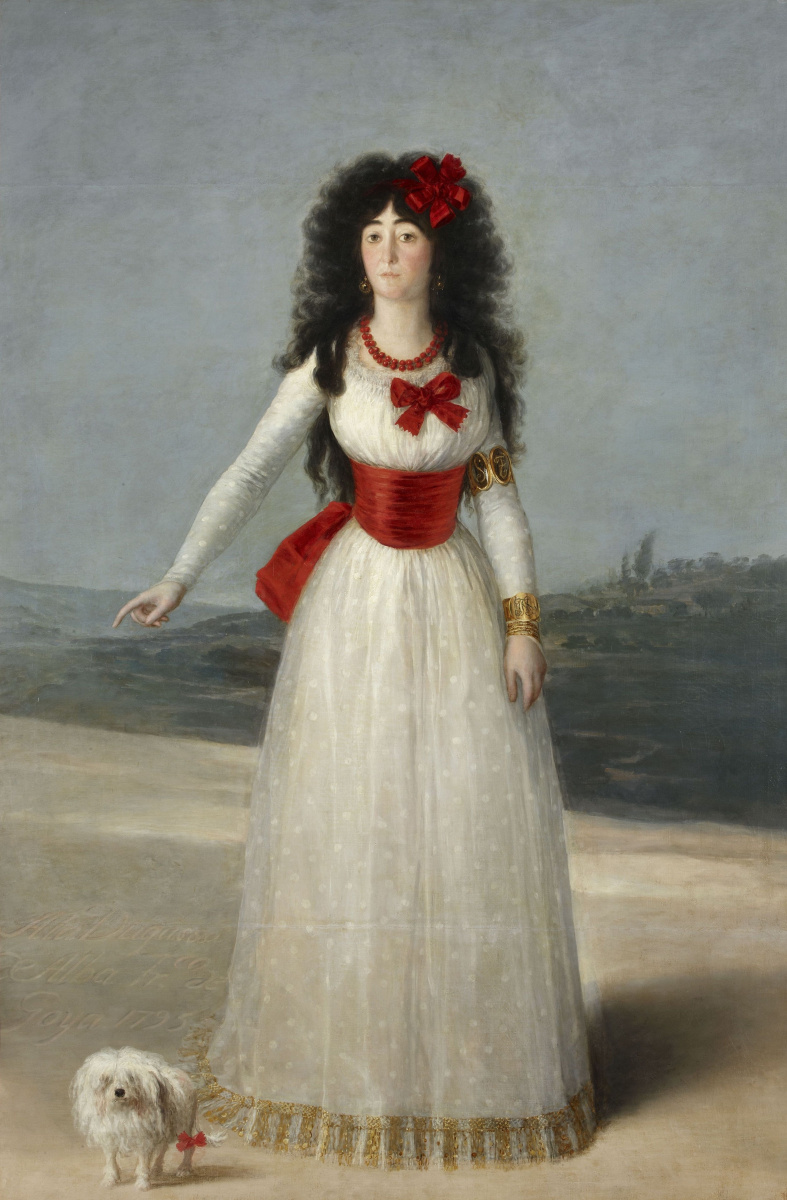The one who helped Francisco Goya reach the peak of his artistic career was María del Pilar Teresa Cayetana de Silva Álvarez de Toledo y Silva Bazán, the Marquise of Villafranca and the Duchess of Alba. In short, Cayetana Alba. Her full name and titles were as pretentious, as their relationship — complicated.
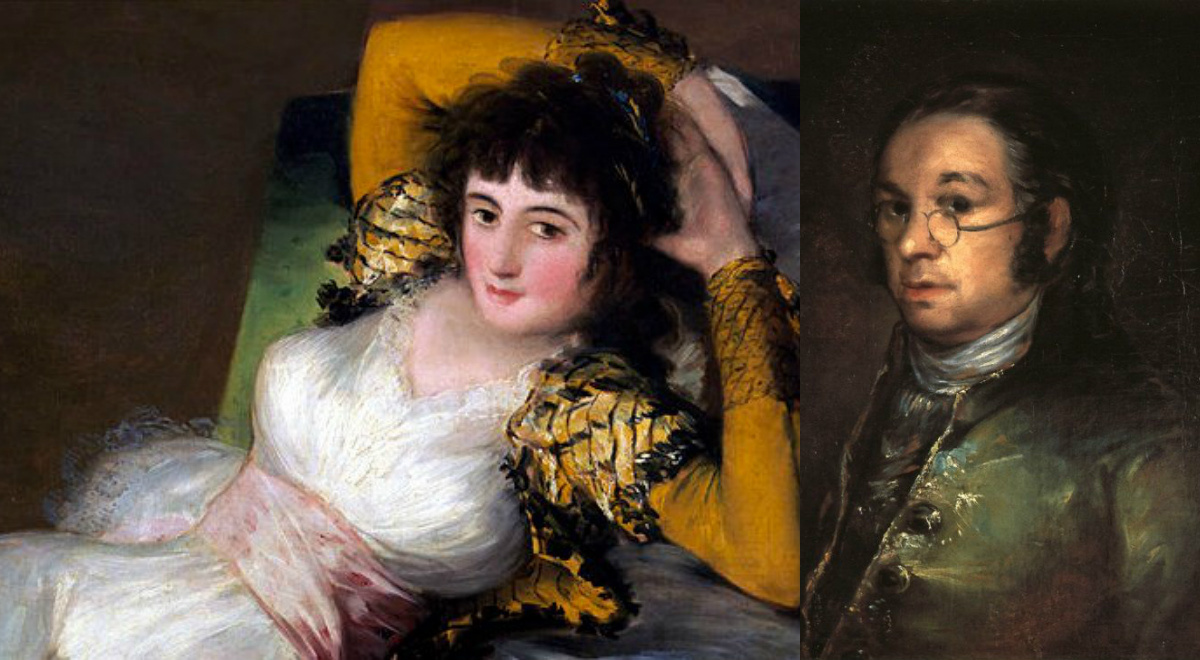
Self-portrait at work
1795, 42×28 cm
To begin with, there is no cast-iron evidence of the erotic relationship between the artist and the Duchess. There are only hypotheses, legends and assumptions. And the reputation of the great Spaniard: impetuous, passionate, impulsive Goya not only called himself a macho — he was one. The pieces of girls' hearts, crunching beneath his feet testify to that. By the way, these "pieces" are fully documented. However, when it comes to the Duchess of Alba, it gets more complicated.
Therefore, let’s consider two versions. The first — "They went through everything" and the second — "They went through a lot, except intimacy". But first, we’ll give you a broad brush picture of what our heroes were like at the time of their first meeting.
Therefore, let’s consider two versions. The first — "They went through everything" and the second — "They went through a lot, except intimacy". But first, we’ll give you a broad brush picture of what our heroes were like at the time of their first meeting.
The Duchess of Alba, a stacking hair
1797, 17.1×10.1 cm
Him and Her
When looking at the noble kin of the Duchess of Alba (the only daughter of Francisco de Paula de Silva Mendoza y Álvarez de Toledo, 10th Duke of Huéscar and Mariana del Pilar de Silva-Bazán y Sarmiento), one can say that she had a leg up on the then Queen of Spain, Maria Luisa.
Queen of Spain Maria Luisa on horseback
1799, 338×282 cm
Cayetana’s mother died at childbirth, and her father died when the girl was barely 8 years old. At the age of twelve, the future Duchess of Alba was given in marriage to Don José Álvarez de Toledo Osorio y Gonzaga, the head of one of the noblest kin of Spain. At the time of their marriage, Don José himself was barely 18.
Cayetana earned a reputation of a rebel and came athwart the queen herself every once in a while. Rumour had it, that the Duchess often changed lovers. Her marriage to the Duke was infertile.
Cayetana earned a reputation of a rebel and came athwart the queen herself every once in a while. Rumour had it, that the Duchess often changed lovers. Her marriage to the Duke was infertile.
Jose Alvarez de Toledo, Marquis of Villafranca and Duke of Alba
1795, 195×126 cm
Francisco Goya’s veins were also full of blue blood — his mother was a hidalgo’s daughter. His father, though could not boast of the nobility of the family, achieved great success in his craft — José Goya was a gilder.
Before meeting the Duchess of Alba, the artist had managed to become famous (people from the court often commissioned him to create portraits) and get married. The marriage was shot-gun: seduced Josefa, a sister of Goya’s friend and teacher Francisco Bayeu, was five months pregnant. Josefa remained the painters' wife until her death. She gave birth to five children, of whom only one survived, and got only one portrait from her husband.
Before meeting the Duchess of Alba, the artist had managed to become famous (people from the court often commissioned him to create portraits) and get married. The marriage was shot-gun: seduced Josefa, a sister of Goya’s friend and teacher Francisco Bayeu, was five months pregnant. Josefa remained the painters' wife until her death. She gave birth to five children, of whom only one survived, and got only one portrait from her husband.
Josefa, Bayeux, the artist's wife
1800-th
, 81×56 cm
«Теперь я знаю, что такое жить»
Goya and the Duchess of Alba met when the artist was in his late 40s, and the aristocrat — in her early 30s. The court painter first created the portrait of Duke José María Álvarez de Toledo y Gonzaga, the husband of the Duchess of Alba, and then — her own one. Sophisticated, intelligent, temperamental beauty Cayetana could not leave a ladiesman like Francisco Goya unfazed. Her image began to appear more often in his other works, and not only in grand portraits."Now I know how it feels to live" - this phrase from the artist’s letter is considered a proof of the hectical romance between the great Spaniard and Donna Cayetana. In one of her portraits, created at that time, the Duchess wears two rings inscribed "Goya" and "Alba".
Portrait of Duchess Alba
1797, 210.1×149.2 cm
The portrayed beauty herself points down, to the inscription "Only Goya" at her feet.
At the time of the creation of this fateful for the artist painting (portrait of the royal family — the top of his career!), the couple experienced one of the most difficult periods of their relationship: Goya and Alba kept breaking up and making it up. Who was the initiator, what are the testimonies of the other affairs of the beauty and the master during their break? Both of them had, as it were, a bad temper. "She (the Duchess of Alba — ed.) tears out her hair, and stamps all because Father Pichurris told her to her face that she was pale…" - this is one of Francisco Goya’s statements.
Much later, novelists and directors would add a bunch of details to the relationship of the artist and the Duchess. For example, in his book Goya or the Hard Way to Enlightenment, Lion Feuchtwanger demonizes the relationship of the painter with the noblewoman. In his artistic world, Goya would sacrifice his own daughter for the night of passion with Alba. To spend time with the obstinate beauty, Francisco cancelled several sessions of painting Queen of Spain, Maria Luisa, upon the pretext that his child suddenly got seriously ill. Later, the girl would really die from a sudden illness. Thus, Feuchtwanger explained why the great portrait painter did not always portray his beloved woman beautiful. In his series of etchings Los Caprichos, Alba constantly appears in the form of a devil.
According to legend, the death of Cayetana’s husband, Duke José María Álvarez de Toledo y Gonzaga, who died suddenly at the age of forty, was caused by an unchaste relationship between his wife and the artist. The Duke, concerned that Cayetana was too recklessly making love with the painter, insisted on leaving Madrid. The woman felt that she could do without a legal spouse, but would not be able to break up with Goya. In any case, for some time, there had been rumours in society that it was Cayetana Alba who was the main culprit of the Duke’s sudden death.
The Duchess herself lived six years longer than her husband and died at the same age of forty. According to some, it was a suicide — the beauty could not stand the thought of aging. There is another version of the Duchess’s unexpected death. Allegedly, she died from severe blood loss when the childless Donna wanted to get rid of the child late in her pregnancy. It was Goya’s child.
Francisco José de Goya y Lucientes lived 26 years longer than his muse.
According to legend, the death of Cayetana’s husband, Duke José María Álvarez de Toledo y Gonzaga, who died suddenly at the age of forty, was caused by an unchaste relationship between his wife and the artist. The Duke, concerned that Cayetana was too recklessly making love with the painter, insisted on leaving Madrid. The woman felt that she could do without a legal spouse, but would not be able to break up with Goya. In any case, for some time, there had been rumours in society that it was Cayetana Alba who was the main culprit of the Duke’s sudden death.
The Duchess herself lived six years longer than her husband and died at the same age of forty. According to some, it was a suicide — the beauty could not stand the thought of aging. There is another version of the Duchess’s unexpected death. Allegedly, she died from severe blood loss when the childless Donna wanted to get rid of the child late in her pregnancy. It was Goya’s child.
Francisco José de Goya y Lucientes lived 26 years longer than his muse.
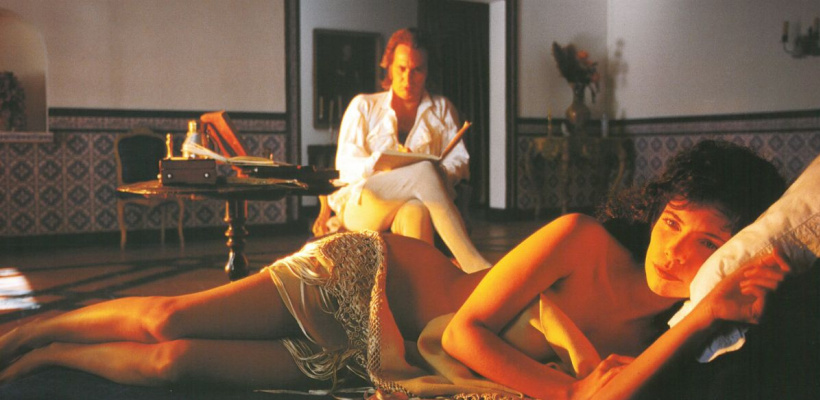
A scene from the film Goya in Bordeaux (source of illustration — www.europeanfilmawards.eu)
A relationship that never happened?
It bears repeating that there is no documented evidence of whether Francisco Goya and the Duchess of Alba were actually lovers. And all the above-mentioned arguments in favour of the erotic relationship can be interpreted as quite innocent. In the sense that they, of course, indicate Goya’s passion. But, after all, having passionate feelings towards someone and indulging in carnal pleasures is not the same thing.Chances are, there could be another scenario of their relationship. While the great artist was lovesick, the noblewoman could simply revel in her own beauty and unlimited power over men, and not only over the poor suffering painter. Many were hopelessly in love with the Duchess, including her doctor Peral, one of the most educated and intelligent men of Spain at that time. It was rumoured that it was he who helped the Duchess get rid of her spouse. Perhaps, Cayetana was only playing with the artist, who was in love with her just as she was playing with the doctor. She had an unsurpassed painter to capture her beauty, but never let him close to her body.
The fact that the Duchess was playing with Goya is proved by the beforementioned series of etchings Los Caprichos. The etching Volavérunt (They have flown) depicts a woman with her legs spread too indecently for those times, who is standing on the heads of three ugly man. Each of them holds a sizable phallic symbol in their hands. It looks like the artist portrayed not a beloved, but a deeply hated woman. On the other hand, Spanish passions aren’t about the easy ride — hate turns into love, and love — into hate.
"They took off" (Series "Caprichos", page 61)
1799, 23.2×17.5 cm
Those who are sceptical about the possible erotic relationship between the noblewoman and the artist, note that at that time, Goya had recently suffered paralysis and was almost deaf. It is also believed that paralysis and deafness were the results of syphilis. It is unlikely that such a physical form could evoke the voluptuousness of the Duchess.
Supporters of the same love affair object that the theme of "beauty and the beast" is old as the hills and still quite effective. And state that these are the opposites that attract each other.
Supporters of the same love affair object that the theme of "beauty and the beast" is old as the hills and still quite effective. And state that these are the opposites that attract each other.
The Clothed Maja
XIX century, 97×190 cm
But then the question is: if everything was "innocent enough", who are Goya’s famous majas (macho-women) — The Clothed Maja and The Nude
Maja? The portrait resemblance to the Duchess of Alba is striking.
But if the question of the face is more or less clear, the body remains a mystery.
Critics point out that in the Majas, the head of one woman seems to have been added to the body of the other one. There is a version that two women are depicted on the canvases: the body belongs to Goya’s mistress, a famous Spanish dancer of that time, and the head — to Cayetana Alba.
But if the question of the face is more or less clear, the body remains a mystery.
Critics point out that in the Majas, the head of one woman seems to have been added to the body of the other one. There is a version that two women are depicted on the canvases: the body belongs to Goya’s mistress, a famous Spanish dancer of that time, and the head — to Cayetana Alba.
Nude Maja
XIX century, 98×191 cm
In 1945, the Duchess’s relatives even insisted on the exhumation of Donna’s remains to prove that it wasn’t Alba in the paintings. After all, such behaviour of a noble lady as posing naked was not only unacceptable at that time, but also cast a shadow on the morals of all her descendants. Still, the analysis didn’t set the record straight. Over the past years, the grave has been destroyed several times, and the remains were subjected to physical impact. It was impossible to carry out accurate measurements, and the legend remained a legend.
One way or another, both paintings were kept in the collection of the Duchess, and after her death, were given to the Queen’s favourite Manuel Godoy at his request.
One way or another, both paintings were kept in the collection of the Duchess, and after her death, were given to the Queen’s favourite Manuel Godoy at his request.
Manuel Godoy, Duke of Alcudia, "Prince of Peace"
1801, 180×267 cm
The magnate entertained his guests by placing the canvases one above the other in order to "undress" the maja by pulling a string. For that time, it was one of the most provocative paintings, the mere possession of which could lead to serious problems with the Inquisition.
The image of the nude maja with the Duchess’s head "glued" to her body can indicate that Goya’s carnal lust was never satisfied: he just sublimated his lovesickness to work, so that he could enjoy the nakedness of the passionately desired woman at least in his painting.
The image of the nude maja with the Duchess’s head "glued" to her body can indicate that Goya’s carnal lust was never satisfied: he just sublimated his lovesickness to work, so that he could enjoy the nakedness of the passionately desired woman at least in his painting.
But in the end, is it really so important to get an exact answer to the question whether Goya and Alba were lovers? That relationship was definitely full of passion, which gave rise to the paintings that we admire to this day.
Author: Olena Syroid
Author: Olena Syroid
Portrait of Maria Teresa Cayetana de Silva, Duchess of Alba
1795, 194×130 cm
In lieu of an epilogue. "Francisco Goya finished his earthly course in the French city of Bordeaux at the age of 82: when the artist was 68, his next partner (after the death of his wife) became Leocadia Weiss. The married beauty was 40 years younger than Goya, but, having fallen in love, left her wealthy and young husband. The couple had two more children — a son and a daughter, and his elder, indignant son Javier, who was of the same age as Leocadia, would be at law with his own father for a long time, claiming a considerable inheritance… "






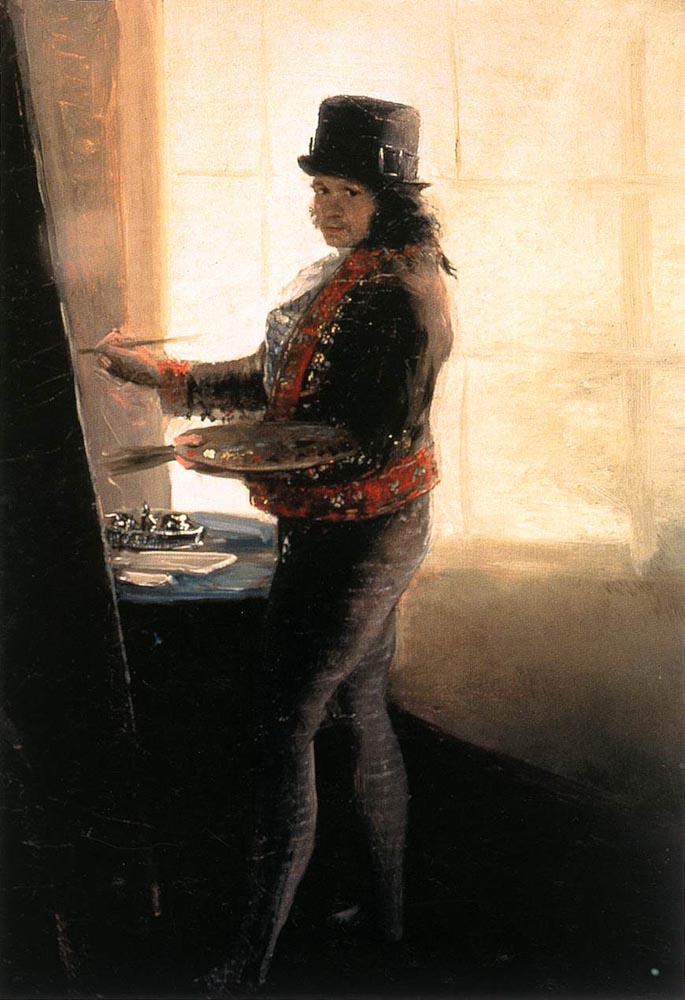

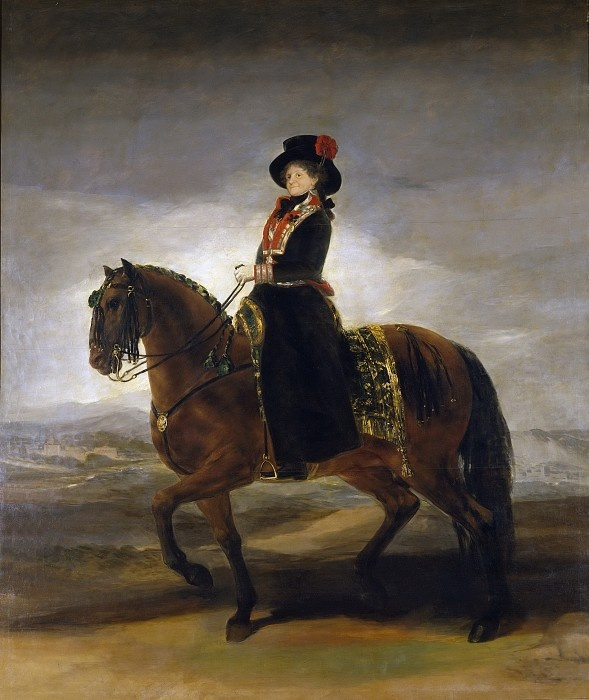
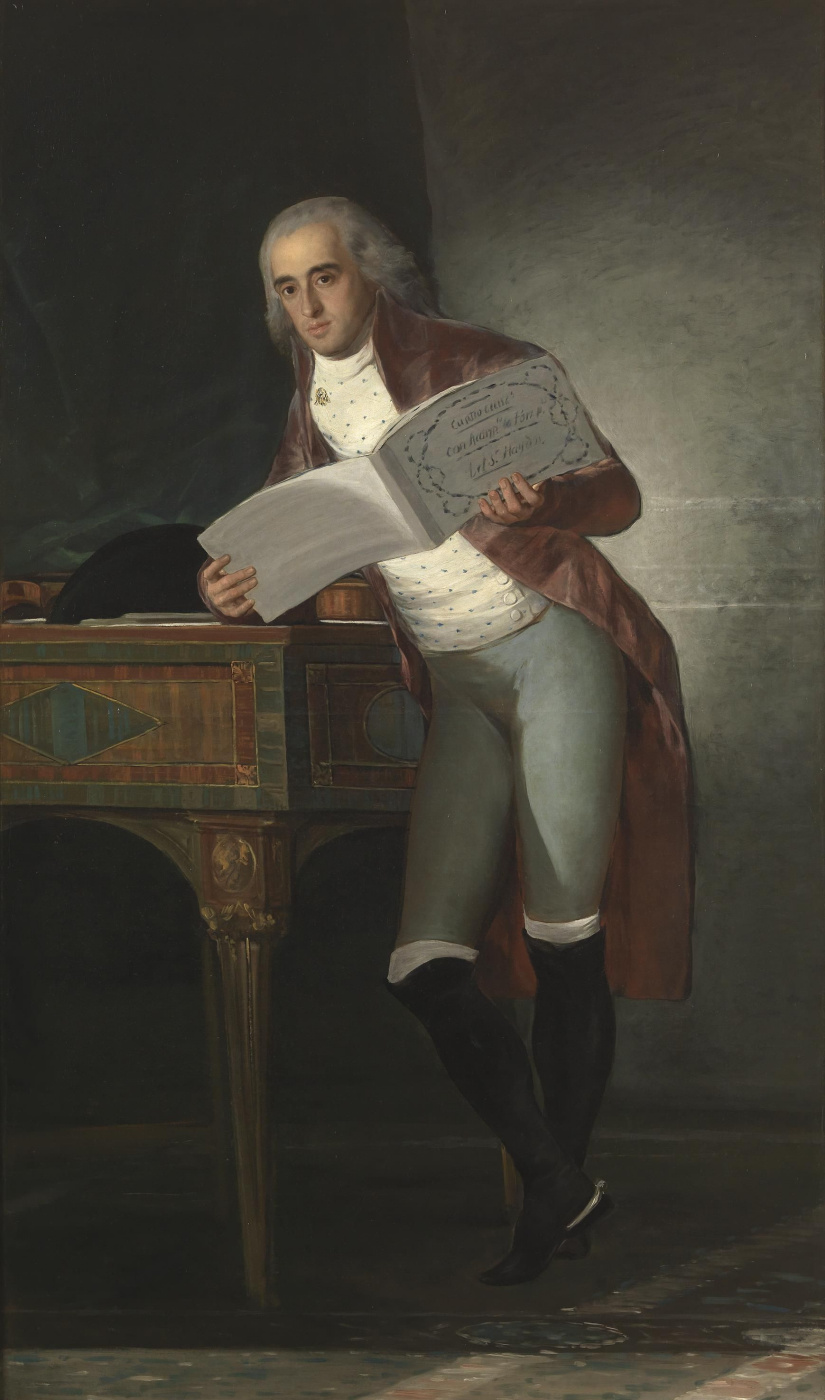
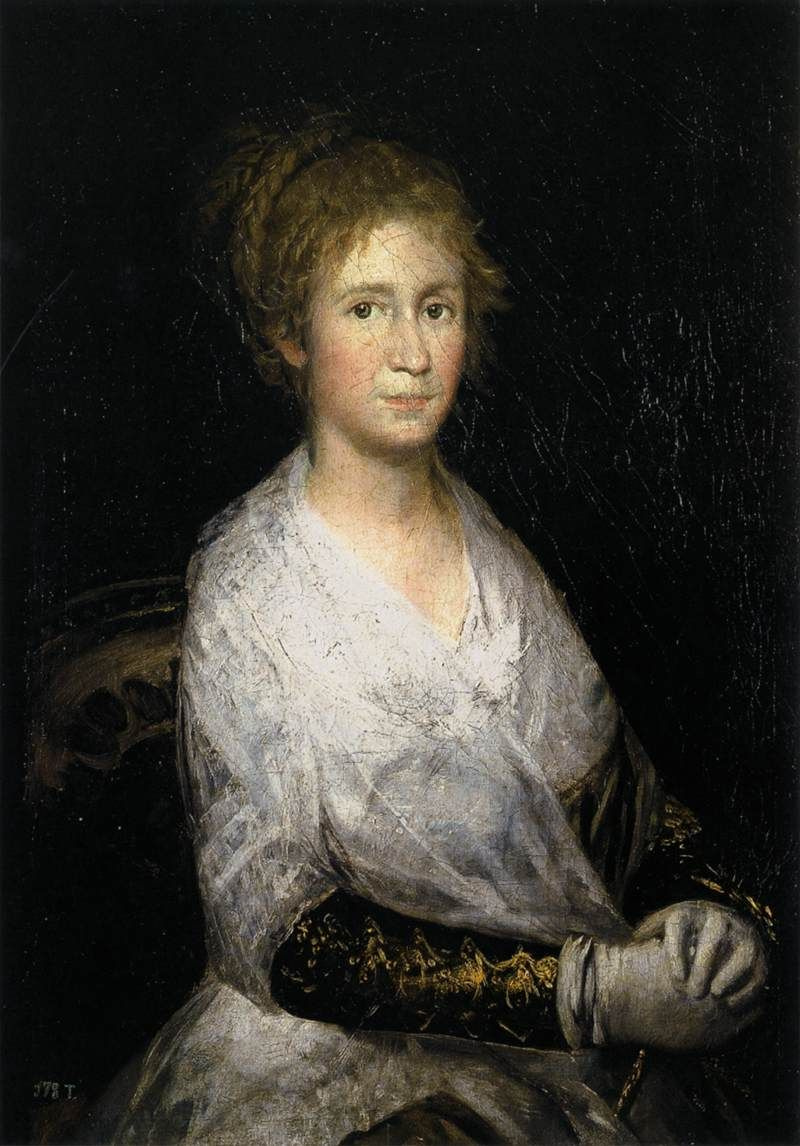













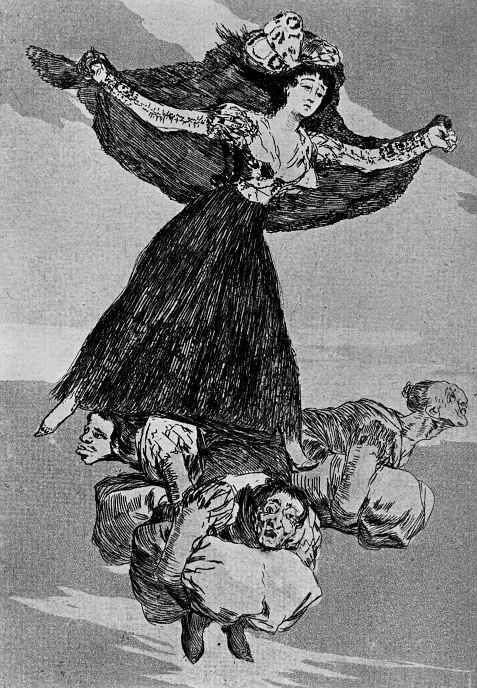

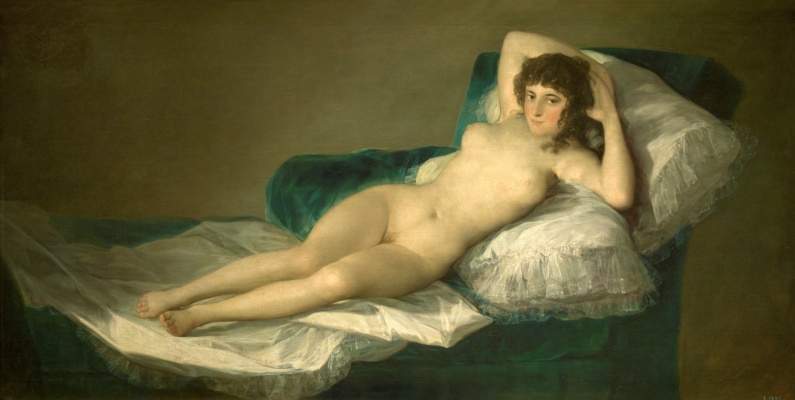
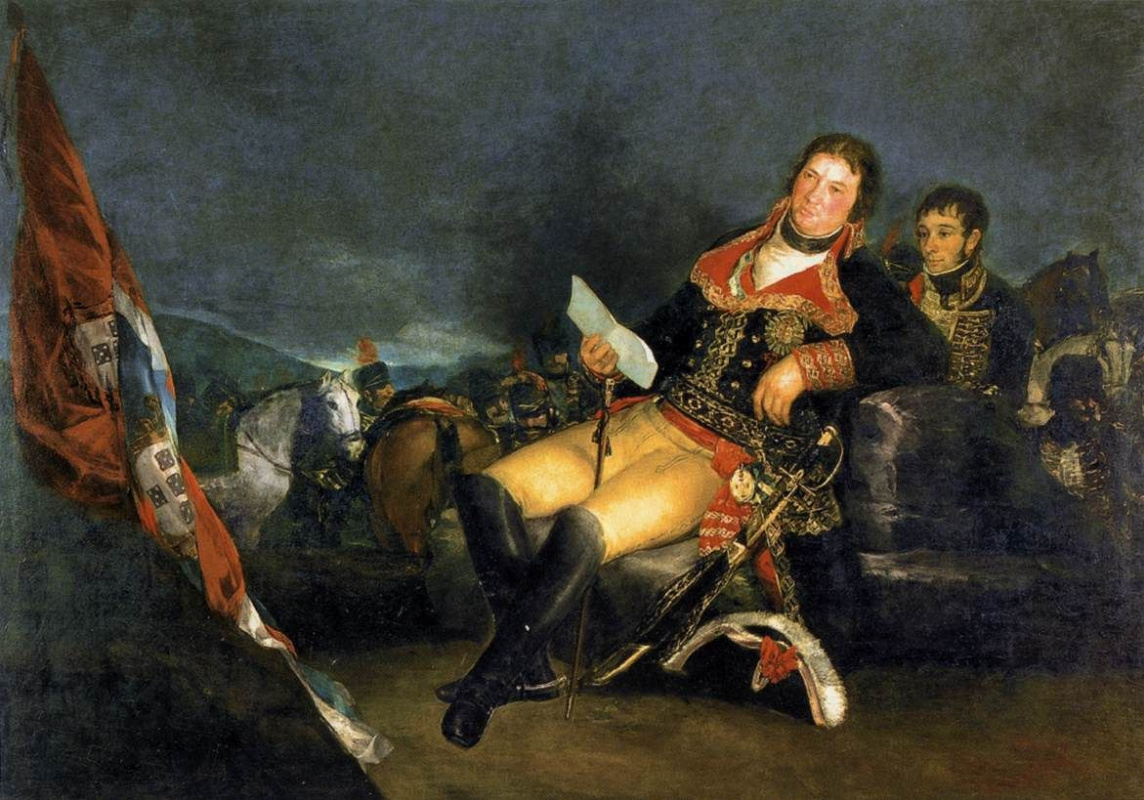
![Francisco Goya. The Madrid album [20]: Nude model with a mirror, from the back, or After a bath Francisco Goya. The Madrid album [20]: Nude model with a mirror, from the back, or After a bath](https://arthive.com/res/media/img/oy1400/work/d1b/220177.jpg)
